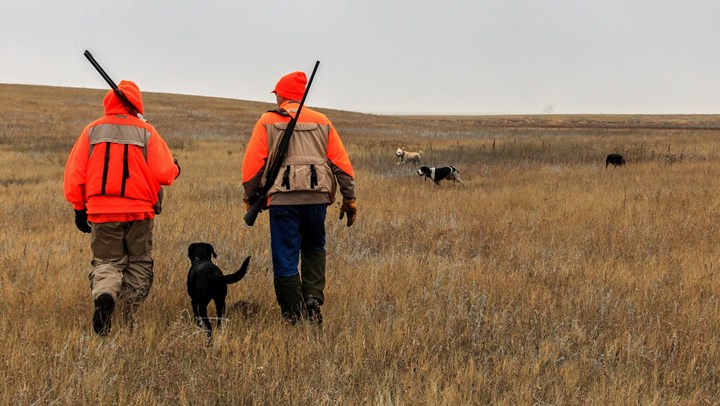
by Chris Chaffin - Saturday, June 3, 2017

A long time ago, in a country not so far away ... there were some fundamental subjects that every child in America was supposed to be taught as part of the nation’s commitment to educate and improve the lives of all its citizens. They were called the three “Rs”—reading, reading, (w)riting and (a)rithmatic.
Okay, so they used a little literary license, but the objective was important enough that the alphabetical trickery stuck. Everyone for several generations knew exactly what you meant when you said the “3 Rs.”
For today’s hunting and shooting sportsman, there is a new set of “3 Rs,” one that is perhaps just as important as the former “Rs”—as least for those who are concerned about wildlife conservation and the future of America’s hunting and shooting heritage. Today’s 3 Rs are Recruitment, Retention and Reactivation (3R).
According to the Wildlife Management Institute (WMI) and the Council to Advance Hunting and the Shooting Sports (CAHSS), hunters and shooters provide 80 percent of the funding for all wildlife species. They have been the primary source of funding for wildlife conservation since 1937, through “license fees and an excise tax on sporting goods (made possible through the hunting and sporting arms industry.)”
Since that time, in recognition of the billions of dollars that hunters and shooters have generated for wildlife conservation and associated habitat, concerned partners like state game agencies, conservation and shooting sports organizations and the hunting/shooting sports industry have invested heavily in R3. Their goal, of course, has been to reverse the decline in participation and simultaneously increase the funding available for conservation.
However, participation has been declining since the 1980s, resulting in fewer dollars available for conservation in spite of sportsmen's many efforts to add participants. In 2009, WMI research documented there were more than 300 programs being conducted across the United States by agencies and conservation organizations. There were additional programs being conducted by trade and industry organizations.
Recently researchers and those with intimate knowledge of R3 programs have started to recognize and identify the complexity of the scenario. Among other things, they have concluded that R3 programs must expand beyond the “hands-on learning opportunities” that characterize so many contemporary recruitment programs. They have concluded that creating participants from new audiences will require “multi-pronged marketing campaigns, outreach efforts and business practices that provide customer-centric resources such as easy-to-access and easy-to-understand straightforward rules and regulations, convenient licensing structure and sales processes, and increased access to places to hunt and shoot.”
Past R3 programs have focused mostly on introductory or trial events, many aimed at the youth of traditional audiences—those who were, in many cases, already likely to be mentored as hunters or shooters. Research notes that there has been little done to recruit from new demographics and move interested parties into becoming participants.
Current R3 partners representing a cross section of agencies, conservation and shooting sports and industry representatives have developed a National Hunting and Shooting Sports Action Plan. They seek to build even more and better partnerships where our community can “…align the programs, efforts and financial resources necessary to establish recruitment pathways, whereby participants can be presented with an array of experiences and contacts over time that allows them to be mentored into hunting and the shooting sports.”
Partnerships must develop an integrated framework to identify effective measures that are the key to stabilizing and increasing the number of hunting and shooting sports participants. The coordination of these national and local efforts will help identify where R3 initiatives are needed and what resources will be required to support them. WMI and CAHSS are actively working to build the partnerships that can take root.
To learn how you and the organizations you belong to can be a part of the new R3 initiative and help support the future of hunting and shooting sports, contact CAHSS at [email protected].
■ ■ ■
About the Author
Chris Chaffin has been an outdoor communicator, educator and partnership manager for more than 40 years. He has worked on the national scene representing several prominent components of the outdoor community promoting hunting, fishing, the shooting sports and conservation. He served two terms as Treasurer for the Professional Outdoor Media Association (POMA), eventually taking on roles as vice-president, President and Chairman of the Board.

In 2007, he launched Chaffin Communications, Inc., a communications consulting company focusing on the outdoors. In 2012, with support from the Outdoor Adventure Dream Giveaway, Chaffin founded and currently manages the Outdoor Adventure Conservation Fund, a Florida non-profit established to encourage and facilitate more people participating in traditional outdoor activities. For more information, click here.
E-mail your comments/questions about this site to:
[email protected]
Proudly supported by The NRA Foundation and Friends of NRA fundraising.
